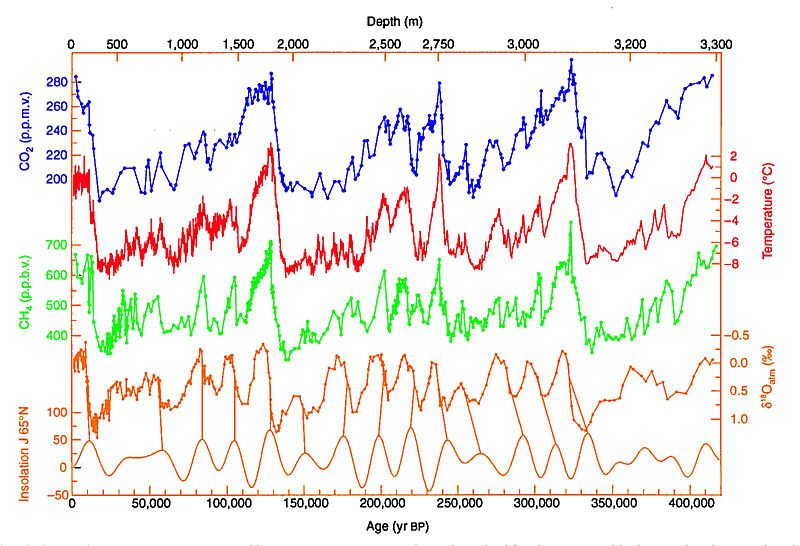As an environmental journalist more broadly and an air-quality (and climate) correspondent more narrowly, on matters dealing with such issues, only the facts will do. Anything less and it’s nothing more than hearsay. Therefore, I am obliged to stay informed on matters dealing with such issues, which would be impossible without me first doing my homework. Air Quality Matters blog readers are owed that.
From every program I’ve ever watched and listened to, to every print-vehicle accounting that I have read (that which I have visually consumed and mentally packed away) on climate, warming and greenhouse-gas-related information, I continue to build upon my knowledge-base in these areas. The more such information I consume, the more I am able to add to that knowledge framework.
Furthermore, I have my own ideas, opinions and perceptions, of course, about meteorology – atmosphere, climate and weather – and how heat-trapping gases like carbon dioxide and methane, to name but two, have the “potential” to alter or disrupt the state of any one, any pair or all three of these in some way – irrespective of whether humans are of influence in this regard or not.

So, take a look at the last 420,000 years. What you’ll notice is that temperature within that time has varied considerably. In that timespan, earth’s average temperature has ranged from a low of about -8 to around a high of +3 degrees Celsius. And this extent of temperature swing has occurred not once, not twice, but count ‘em, four times in that length of time – on average, once every 100,000 or so years.
What is difficult to pin down with absolute preciseness is why temperatures have ranged as they have. Some attribute the pattern that’s transpired to what is known as the Milankovitch Cycles. Others may point to other factors or reasons. But, if we were to look much more closely at what’s been happening temperature range-wise over the past 10,000 to 14,000 years, what we see over this timeframe is relative temperature stabilization; what some have come to accept as or believe is a temperature anomaly. But, really, is that what we’re seeing? If we were to look at temperature trajectories dating back in time tens to hundreds of millions or perhaps even billions of years (if that’s even possible), would the identical situation have happened previously?
What I can say is if one were to examine existing conditions of the time when dinosaurs roamed the earth, the atmosphere was a lot hotter then. It had to be. Many of the dinosaurs that existed were herbivores and just think how much vegetation there would have had to have been in order to satisfy those voracious vegan appetites.
And, there is different types of evidence to support this. Evidence of what dinosaurs existed and where, and evidence of what types of vegetation existed and where this vegetation was located. As a matter of fact, fossilized ferns were unearthed along the Pacific Northwest coast in Canada, for one, which is telling in terms of what temperatures during prehistoric times were like in that region.
That’s quite a departure from what exists today. And, today the mercury is indicating average global surface temperatures around 1.2 degrees Celsius above the 0 degrees Celsius reference point or what is considered today to be the norm. Which would put it well within the range of temperature readings recorded during the past 420,000 years.
But, as to the most recent period in which there has been widely agreed-upon accelerated temperature rise – a 1.2-degrees-Celsius temperature jump basically just in the last 270 years – with why this has happened, what has caused this – people are looking for answers.
Some will point to the recent concomitant increase in global average temperatures at the earth’s surface to an associated climb in atmospheric greenhouse gas amounts and/or concentrations. Others, meanwhile, completely reject that notion. What I know unequivocally is that through human activity (namely the burning of fossil fuels), roughly 40 billion tonnes or 40 gigatonnes of carbon dioxide is added to the air each year.
But, this must be taken in context. Annually, occupying the atmosphere is approximately 120 gigatonnes of CO2. So what we’re contributing is roughly a third to the total. What I believe is important to look at is to see over time how or if that relationship changes. Will the human contribution become more? Will it become less? Or, will it remain about the same?
It is, moreover, helpful to ascertain whether the rate of GHGs entering the air is accelerating, leveling off or reversing. It is important to note that during economic downturns and the height of the pandemic, said emissions went into retreat, if but briefly.
And, finally, in the “My message to COP-28 conferees: Have productive talks, reach consensus, then let’s get to work to fix the climate,” post where I wrote: “… this year one climate expert was resolute when she reported during a recent tv interview that the curve on global warming was finally bending,” oh, regarding this, refer to the Contemplative Point below:
Contemplative Point: To have any meaning, such statements (and those of a similar nature), must be put into proper context – always!
Last updated on Aug. 12, 2023 at 6:29 p.m. Pacific Daylight Time.
⁃ Alan Kandel
Copyrighted material.
Above and corresponding, connected home-page-featured image: J.R. Petit, et al. via Wikimedia Commons